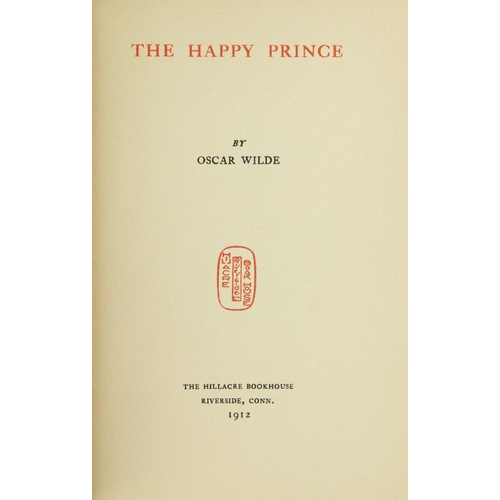Books from the Library of Henry Rogers Broughton, 2nd Baron Fairhaven
John Miller
Illustratio systematis sexualis Linnæi. An illustration of the sexual system of Linnaeus. London: by the author, [1770-] 1777
FIRST EDITION, 3 volumes in one, folio (519 x 367mm.), plain engraved allegorical frontispiece, title, list of subscribers, 99 (only, of 104) engraved plates, plates 5-99 in both plain and hand-coloured states, errata leaf at rear, contemporary tree calf, rebacked retaining original spine, spine with raised bands in seven compartments, red morocco label to second compartment, marbled endpapers, one text leaf cropped at upper margin, dampstaining at margin of allegorical frontispiece, scattered spotting, extremities slightly rubbed
First edition, with excellent plates, mostly in two states, coloured and uncoloured as issued, of an "immense work of botany wherein the pencil of Miller illustrated, in a style of unprecedented elegance, the sexual system of Linnæus" (J. C. Lettsom, The Memoirs of John Fothergill [1789], p. 106). The work was issued in 20 parts between 1770 and 1777. According to the list of subscribers 105 copies were ordered by 85 individuals. The uncoloured plates invariably included lettering for scientific purposes, while the handcoloured plates are often without lettering and the vast majority are printed using a warm brown ink with the intent of making the images more aesthetically pleasing. The plants described and illustrated came in the main from Dr. John Fothergill's famous garden in Upton, Essex. Fothergill was an enthusiastic supporter and indeed superintendent of the work, but refused Miller's attempt to dedicate the work to him. He felt that dedications were "more productive of envy to the patron, than of advantage to the author." John Miller (1715–1780), born Johann Sebastian Müller in Nuremberg, came to England in 1744 and remained there for the rest of his life. He was a botanical artist and engraver of considerable repute and came to the attention of the great naturalist Linnæus through the connection of John Ellis Linnæus had nothing but praise for the artist, stating that the plates were "more beautiful and more accurate" than any he had ever seen.
LITERATURE:Dunthorne 206; Great Flower Books, p. 68; Henrey 1153; Nissen BBI 1372; Stafleu TL2 6482
Books from the Library of Henry Rogers Broughton, 2nd Baron Fairhaven
John Miller
Illustratio systematis sexualis Linnæi. An illustration of the sexual system of Linnaeus. London: by the author, [1770-] 1777
FIRST EDITION, 3 volumes in one, folio (519 x 367mm.), plain engraved allegorical frontispiece, title, list of subscribers, 99 (only, of 104) engraved plates, plates 5-99 in both plain and hand-coloured states, errata leaf at rear, contemporary tree calf, rebacked retaining original spine, spine with raised bands in seven compartments, red morocco label to second compartment, marbled endpapers, one text leaf cropped at upper margin, dampstaining at margin of allegorical frontispiece, scattered spotting, extremities slightly rubbed
First edition, with excellent plates, mostly in two states, coloured and uncoloured as issued, of an "immense work of botany wherein the pencil of Miller illustrated, in a style of unprecedented elegance, the sexual system of Linnæus" (J. C. Lettsom, The Memoirs of John Fothergill [1789], p. 106). The work was issued in 20 parts between 1770 and 1777. According to the list of subscribers 105 copies were ordered by 85 individuals. The uncoloured plates invariably included lettering for scientific purposes, while the handcoloured plates are often without lettering and the vast majority are printed using a warm brown ink with the intent of making the images more aesthetically pleasing. The plants described and illustrated came in the main from Dr. John Fothergill's famous garden in Upton, Essex. Fothergill was an enthusiastic supporter and indeed superintendent of the work, but refused Miller's attempt to dedicate the work to him. He felt that dedications were "more productive of envy to the patron, than of advantage to the author." John Miller (1715–1780), born Johann Sebastian Müller in Nuremberg, came to England in 1744 and remained there for the rest of his life. He was a botanical artist and engraver of considerable repute and came to the attention of the great naturalist Linnæus through the connection of John Ellis Linnæus had nothing but praise for the artist, stating that the plates were "more beautiful and more accurate" than any he had ever seen.
LITERATURE:Dunthorne 206; Great Flower Books, p. 68; Henrey 1153; Nissen BBI 1372; Stafleu TL2 6482















Testen Sie LotSearch und seine Premium-Features 7 Tage - ohne Kosten!
Lassen Sie sich automatisch über neue Objekte in kommenden Auktionen benachrichtigen.
Suchauftrag anlegen